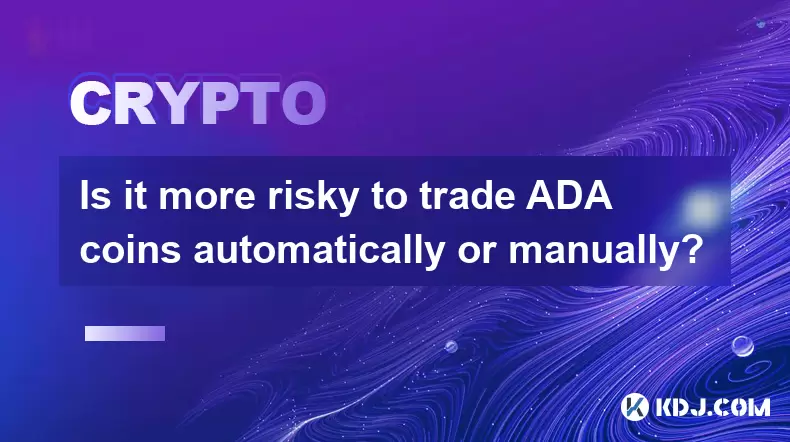-
 Bitcoin
Bitcoin $118600
-2.59% -
 Ethereum
Ethereum $4282
-0.42% -
 XRP
XRP $3.129
-4.21% -
 Tether USDt
Tether USDt $0.0000
0.01% -
 BNB
BNB $805.4
-1.80% -
 Solana
Solana $174.3
-5.77% -
 USDC
USDC $0.9998
-0.01% -
 Dogecoin
Dogecoin $0.2230
-6.33% -
 TRON
TRON $0.3466
1.70% -
 Cardano
Cardano $0.7745
-5.73% -
 Chainlink
Chainlink $21.37
-3.53% -
 Hyperliquid
Hyperliquid $42.93
-7.25% -
 Stellar
Stellar $0.4324
-4.94% -
 Sui
Sui $3.660
-7.17% -
 Bitcoin Cash
Bitcoin Cash $591.6
2.72% -
 Hedera
Hedera $0.2467
-7.04% -
 Ethena USDe
Ethena USDe $1.001
0.00% -
 Avalanche
Avalanche $22.92
-6.14% -
 Litecoin
Litecoin $118.8
-3.79% -
 Toncoin
Toncoin $3.378
-0.46% -
 UNUS SED LEO
UNUS SED LEO $9.011
-1.15% -
 Shiba Inu
Shiba Inu $0.00001294
-5.81% -
 Uniswap
Uniswap $11.24
0.53% -
 Polkadot
Polkadot $3.870
-6.16% -
 Cronos
Cronos $0.1662
-1.68% -
 Dai
Dai $1.000
0.02% -
 Ethena
Ethena $0.7915
-5.62% -
 Bitget Token
Bitget Token $4.414
-1.65% -
 Monero
Monero $259.3
-3.85% -
 Pepe
Pepe $0.00001120
-8.29%
Is it more risky to trade ADA coins automatically or manually?
Trading ADA involves significant risks; manual trading requires market expertise and emotional control, while automated trading needs careful setup and monitoring to manage volatility.
May 20, 2025 at 12:56 pm

Trading cryptocurrencies like ADA (Cardano) involves a significant level of risk, whether you choose to trade manually or automatically. The decision between these two methods depends on various factors including your trading experience, risk tolerance, and the strategies you employ. This article will delve into the specifics of both manual and automated trading of ADA coins, highlighting the potential risks and considerations for each approach.
Understanding Manual Trading of ADA
Manual trading involves making all trading decisions yourself, based on your analysis of market trends, news, and other relevant data. This method gives you full control over your trades, allowing you to react to market changes in real-time.
Manual trading requires a deep understanding of the cryptocurrency market and ADA specifically. You need to stay updated with the latest news and developments that could affect ADA's price, such as updates on Cardano's blockchain, partnerships, or regulatory changes. Additionally, you must be adept at technical analysis, using tools like charts, indicators, and patterns to predict future price movements.
One of the main risks associated with manual trading is the potential for emotional decision-making. Traders might hold onto losing positions too long, hoping for a recovery, or sell winning positions too early due to fear of losing gains. This emotional bias can lead to suboptimal trading decisions and increased risk.
Understanding Automated Trading of ADA
Automated trading, on the other hand, involves using algorithms or bots to execute trades based on predefined criteria. These systems can analyze vast amounts of data quickly and execute trades faster than a human could, potentially capitalizing on opportunities that might be missed in manual trading.
Automated trading of ADA can be achieved through various platforms and tools that allow you to set specific parameters for your trades. For example, you might set a bot to buy ADA when its price drops below a certain level and sell when it rises above another threshold. This method can help remove emotional biases from trading, as the bot will follow the set rules without deviation.
However, automated trading also comes with its own set of risks. The primary risk is that the algorithm might not perform as expected due to unforeseen market conditions or changes in ADA's volatility. Additionally, there's the risk of technical failures, such as the bot malfunctioning or the trading platform experiencing downtime, which could result in missed opportunities or unintended trades.
Comparing the Risks of Manual and Automated Trading
When comparing the risks of manual and automated trading of ADA, several factors come into play:
Control vs. Automation: Manual trading offers full control, but it requires constant attention and can be influenced by emotions. Automated trading removes the emotional element but also removes the trader's ability to react to unforeseen events in real-time.
Time Commitment: Manual trading demands significant time and effort to monitor the market and execute trades. Automated trading, once set up, can run continuously without your direct involvement, though it still requires periodic monitoring and adjustments.
Skill and Experience: Successful manual trading often requires a high level of skill and experience in analyzing market trends and making quick decisions. Automated trading can be more accessible to beginners, but it requires a good understanding of how to set up and manage trading bots effectively.
Speed and Efficiency: Automated systems can process data and execute trades much faster than humans, potentially leading to better timing and more efficient trading. However, they might not always be able to adapt to sudden market changes as quickly as a human trader could.
Strategies for Mitigating Risks in Manual Trading
To mitigate the risks associated with manual trading of ADA, consider the following strategies:
Develop a Trading Plan: Create a detailed plan outlining your entry and exit points, risk management strategies, and the amount you're willing to invest. Stick to this plan to avoid making impulsive decisions.
Use Stop-Loss Orders: Implement stop-loss orders to automatically sell ADA if its price falls to a certain level, helping to limit potential losses.
Continuous Learning: Stay informed about ADA and the broader cryptocurrency market. Attend webinars, read books, and follow reputable sources to enhance your trading skills and knowledge.
Diversify Your Portfolio: Don't put all your funds into ADA. Diversify your investments across different cryptocurrencies and asset classes to spread risk.
Strategies for Mitigating Risks in Automated Trading
Similarly, to mitigate risks in automated trading of ADA, consider these strategies:
Backtest Your Strategy: Before deploying your trading bot, backtest it using historical data to see how it would have performed in the past. This can help identify potential flaws in your strategy.
Set Realistic Expectations: Understand that no trading bot can guarantee profits. Set realistic expectations and be prepared for losses.
Monitor and Adjust: Regularly monitor your bot's performance and be ready to adjust its parameters or even pause it if necessary. Market conditions can change, and your bot needs to adapt.
Use Multiple Bots: Consider using multiple trading bots with different strategies to diversify your automated trading approach and reduce the risk of relying on a single bot.
Choosing Between Manual and Automated Trading
Ultimately, the choice between manual and automated trading of ADA depends on your personal circumstances, trading goals, and risk tolerance. Some traders might prefer the control and involvement of manual trading, while others might opt for the efficiency and emotionless execution of automated trading.
Manual trading might be more suitable for those who enjoy the hands-on approach and have the time and expertise to analyze the market. It allows for real-time decision-making and the ability to adapt quickly to market changes. However, it also requires a significant time commitment and carries the risk of emotional decision-making.
Automated trading could be more appealing to those who want to minimize emotional biases and have less time to dedicate to trading. It can execute trades more efficiently and consistently follow a set strategy. However, it requires careful setup and monitoring to ensure the bot performs as expected and adapts to changing market conditions.
Frequently Asked Questions
Q1: Can I combine manual and automated trading strategies for ADA?
Yes, many traders use a hybrid approach, combining manual and automated trading strategies. For example, you might use a bot to execute trades based on technical indicators while manually adjusting parameters or making decisions based on fundamental analysis. This can help leverage the strengths of both methods while mitigating some of their weaknesses.
Q2: How important is it to understand ADA's technology when trading?
Understanding ADA's technology, such as its proof-of-stake consensus mechanism and the Cardano blockchain's development, can be crucial for both manual and automated trading. This knowledge helps you make more informed decisions about when to buy or sell ADA based on technological developments and updates.
Q3: What role does market volatility play in the risks of trading ADA?
Market volatility significantly impacts the risks of trading ADA. High volatility can lead to larger price swings, increasing the potential for both gains and losses. Manual traders need to be prepared to react quickly to these changes, while automated traders must ensure their bots are set up to handle such volatility effectively.
Q4: Are there any specific regulatory considerations when trading ADA?
Regulatory considerations can vary by country, but traders should be aware of any regulations that might affect ADA trading. For instance, some countries have specific rules about cryptocurrency trading, which could impact your ability to trade ADA or the platforms you can use. Staying informed about these regulations is essential to avoid legal issues.
Disclaimer:info@kdj.com
The information provided is not trading advice. kdj.com does not assume any responsibility for any investments made based on the information provided in this article. Cryptocurrencies are highly volatile and it is highly recommended that you invest with caution after thorough research!
If you believe that the content used on this website infringes your copyright, please contact us immediately (info@kdj.com) and we will delete it promptly.
- Dogecoin, Presale, Surge: Riding the Meme Coin Wave
- 2025-08-12 11:10:12
- Dogecoin, Tron, and the ROI Reality Check: What's a Crypto Investor to Do?
- 2025-08-12 11:15:12
- Ethereum Layer-2 Scaling Competition Heats Up as ETH Breaks $4K
- 2025-08-12 10:30:12
- China Regulation, Stablecoins, and BNB Presale: Navigating the Crypto Landscape
- 2025-08-12 11:30:12
- Meme Coins, Investment, and Token Burns: What's Hot in 2025?
- 2025-08-12 10:30:12
- China's National Security Alarm Bells Ring Over Worldcoin's Iris Scans
- 2025-08-12 11:35:12
Related knowledge

How to purchase Aragon (ANT)?
Aug 09,2025 at 11:56pm
Understanding Aragon (ANT) and Its PurposeAragon (ANT) is a decentralized governance token that powers the Aragon Network, a platform built on the Eth...

Where to trade Band Protocol (BAND)?
Aug 10,2025 at 11:36pm
Understanding the Role of Private Keys in Cryptocurrency WalletsIn the world of cryptocurrency, a private key is one of the most critical components o...

What is the most secure way to buy Ocean Protocol (OCEAN)?
Aug 10,2025 at 01:01pm
Understanding Ocean Protocol (OCEAN) and Its EcosystemOcean Protocol (OCEAN) is a decentralized data exchange platform built on blockchain technology,...

Where can I buy UMA (UMA)?
Aug 07,2025 at 06:42pm
Understanding UMA and Its Role in Decentralized FinanceUMA (Universal Market Access) is an Ethereum-based decentralized finance (DeFi) protocol design...

What exchanges offer Gnosis (GNO)?
Aug 12,2025 at 12:42pm
Overview of Gnosis (GNO) and Its Role in the Crypto EcosystemGnosis (GNO) is a decentralized prediction market platform built on the Ethereum blockcha...

How to buy Storj (STORJ) tokens?
Aug 09,2025 at 07:28am
Understanding Storj (STORJ) and Its Role in Decentralized StorageStorj is a decentralized cloud storage platform that leverages blockchain technology ...

How to purchase Aragon (ANT)?
Aug 09,2025 at 11:56pm
Understanding Aragon (ANT) and Its PurposeAragon (ANT) is a decentralized governance token that powers the Aragon Network, a platform built on the Eth...

Where to trade Band Protocol (BAND)?
Aug 10,2025 at 11:36pm
Understanding the Role of Private Keys in Cryptocurrency WalletsIn the world of cryptocurrency, a private key is one of the most critical components o...

What is the most secure way to buy Ocean Protocol (OCEAN)?
Aug 10,2025 at 01:01pm
Understanding Ocean Protocol (OCEAN) and Its EcosystemOcean Protocol (OCEAN) is a decentralized data exchange platform built on blockchain technology,...

Where can I buy UMA (UMA)?
Aug 07,2025 at 06:42pm
Understanding UMA and Its Role in Decentralized FinanceUMA (Universal Market Access) is an Ethereum-based decentralized finance (DeFi) protocol design...

What exchanges offer Gnosis (GNO)?
Aug 12,2025 at 12:42pm
Overview of Gnosis (GNO) and Its Role in the Crypto EcosystemGnosis (GNO) is a decentralized prediction market platform built on the Ethereum blockcha...

How to buy Storj (STORJ) tokens?
Aug 09,2025 at 07:28am
Understanding Storj (STORJ) and Its Role in Decentralized StorageStorj is a decentralized cloud storage platform that leverages blockchain technology ...
See all articles

























































































